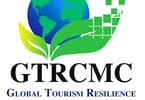Growth in the global travel and tourism industry in 2012 will be broadly in line with expectations set at the beginning of the year.
In an update of forecasts made at the beginning of the year, the World Travel & Tourism Council (WTTC) predicts growth for travel and tourism globally of 2.7%, only slightly downgraded from the 2.8% that was expected for the industry at the beginning of the year.
The main reasons for the marginal downgrade are that WTTC now expects world GDP growth to be 2.3% in 2012; down 0.2% from the beginning of the year and the continuing problems in the Eurozone. The latest economic data from WTTC’s research partner, Oxford Economics, show marginal downgrades in the Eurozone and the US since the beginning of the year, contrasting with upgrades in Japan and emerging markets.
South Korea’s annual travel and tourism GDP growth of 13.2% is the highest of any G20 country. Its boom coincides with its self-designation of 2010-2012 as the “Visit Korea” years and strong international demand from its main two markets (Japan and China). Favorable exchange rates and a number of cultural, sporting and economic events have also contributed to its booming travel and tourism growth.
By contrast, Italy is currently showing the weakest performance of any G20 country, with negative travel and tourism GDP growth of -2.8% now expected in 2012.
David Scowsill, President and CEO, WTTC said: “The latest figures from WTTC confirm the resilience of the travel and tourism industry around the world. Despite some specific and regional downgrades to short-term economic and industry forecasts, the longer-term prospects for travel and tourism remain very positive, and continue to be boosted by strong growth and rising prosperity in emerging markets. We expect the direct contribution of travel and tourism to global GDP to grow by an average of 4% per annum between 2011 and 2021 with Northeast Asia making up a growing share of the overall travel and tourism contribution to GDP.”
A summary can be found online at http://www.wttc.org/site_media/uploads/downloads/Economic_Impact-October2012_FINAL_web.pdf
Highlights of the report include:
– The volume of travel and tourism movements has been positive so far in 2012 and has exceeded expectations from the start of the year. International tourist arrivals have grown 4.9% in the year from January to June, airline passenger traffic is up 6.8%, and hotel occupancy rates are up in many markets apart from Southern Europe.
– The best performing countries for international tourist arrivals are those rebounding from difficult times in 2010 and 2011. In the period from January to June this year, Japan’s arrival figures were up 44.4%, Tunisia was up 41.7%, and Egypt was up 23.4%. South Korea, where visitors from its main market of Japan stayed home after the tsunami, has also been incredibly strong this year with arrivals figures increasing 21.8% YTD.
– Although international visitor’s arrival figures are looking robust, there is evidence of declines both in terms of average spend and hotel average daily room rates (ADRs) in some regions – notably Europe, as well as Northern and Southern Africa.
– In weaker markets, especially Europe, the data is suggesting that the industry could be holding prices down in order to stimulate demand and consumers are choosing lower-priced trips.
Regionally, the report shows:
– The largest downward revisions are in the Middle East and Europe.
— In the Middle East, projections for travel and tourism GDP are still for growth overall, but as the region continues to struggle with further turmoil and negative perceptions of safety and security, growth has been revised down to 1.8% from 3.1% in January. Lebanon’s international tourist arrivals, showing -12.4% growth, has been depressed by the conflict in neighboring Syria.
— Europe is the only world region where negative travel and tourism GDP growth is expected. WTTC forecasts further downgrades of European travel and tourism GDP to -0.6% from -0.2% at the start of the year. Greece continues to struggle with travel and tourism contributed €12.4bn or 6.4% of GDP to its economy in 2011, but has experienced a 9% decline in visitor arrivals in the first half of this year. Italy’s economic difficulties this year have clearly had an impact on its domestic tourism spend which has declined by nearly -4% in the year to date. Overall, Italy’s travel and tourism GDP is expected to be negative at -2.8% in 2012.
– Small downward revisions have also been made for Sub-Saharan Africa, Caribbean, and Latin America.
– On a positive note, upward projections have been forecast for Oceania (3.2% travel and tourism GDP growth up from 2.4% growth expected earlier in the year), and Southeast Asia (up 1.1 percentage points to 5.5%), with a smaller positive revision expected for North America (up 0.4% percentage points to 1.5%).
– Global travel and tourism growth is still being driven by emerging economies, particularly those in Asia. China’s travel and tourism GDP will grow 7.2% and India by 5.7% in 2012, although slight downward revisions have been made. The revision in China’s travel and tourism growth by 1.2 percentage points is largely linked to a weaker export performance elsewhere in its economy as the struggling Eurozone is the destination for around 15% of China’s exports. India’s downgrade is the result of its major infrastructure problems contributing to power blackouts that affected half of its population in the second quarter of this year.
WHAT TO TAKE AWAY FROM THIS ARTICLE:
- We expect the direct contribution of travel and tourism to global GDP to grow by an average of 4% per annum between 2011 and 2021 with Northeast Asia making up a growing share of the overall travel and tourism contribution to GDP.
- The latest economic data from WTTC's research partner, Oxford Economics, show marginal downgrades in the Eurozone and the US since the beginning of the year, contrasting with upgrades in Japan and emerging markets.
- In the Middle East, projections for travel and tourism GDP are still for growth overall, but as the region continues to struggle with further turmoil and negative perceptions of safety and security, growth has been revised down to 1.






















